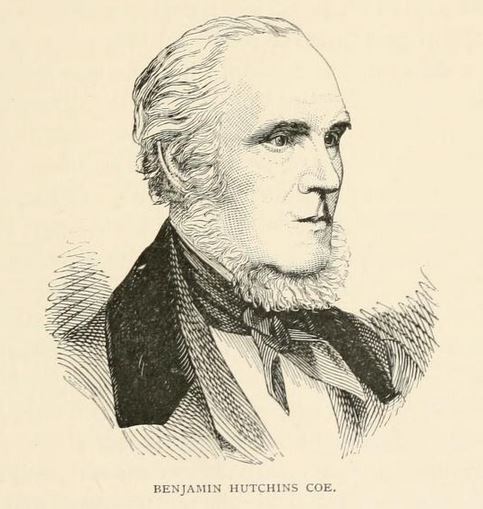By Shirley T. Wajda
A century before the Famous Artists School was established in Westport to teach Americans how to draw Tippy the Turtle, Connecticut-born artist Benjamin Hutchins Coe (1799–1883), a prosperous Middlefield farmer’s son, was publishing manuals to teach Americans how to draw landscapes.
Benjamin Hutchins Coe first tutored students in art in Hartford, the city in which he was born, then after 1833 in New York City, where he established a large private school, and finally in New Haven, from 1854 to 1864. Among his students were the future landscapist Frederic Edwin Church, Church’s friend, sculptor E. S. Bartholomew (the first “keeper” of the Wadsworth Atheneum), and architect and architectural historian Charles Moore (the first director of Harvard University’s Fogg Art Museum). The success of Coe’s students is in some measure a tribute to Coe’s skill as a teacher. As one historian noted, “he possessed a remarkable faculty for imparting truths in a way to fasten them in memory.”

Benjamin Hutchins Coe from Arts and Artists in Connecticut by H. W. French
Another measure of Coe’s success is found in his many and popular drawing manuals published between 1840 and 1858. His first manual, Easy Lessons in Landscape Drawing (Hartford: Robins & Folger, 1840) he based on the widely held belief that anyone who could learn how to write with pen or pencil could learn how to draw. The connection between writing and drawing was based simply on the nature of the line—that the line was fundamental to form. “Do not begin to make . . . figures,” Coe advised, “till you are able to draw perpendicular and horizontal lines.”
Drawing was a skill suited to many tasks and professions, and Coe’s manuals were contributions to a larger national movement not only in teaching drawing as a skill but also raising aesthetic taste. The nation’s educational leaders—including Henry Barnard, the editor of the Connecticut Common School Journal and for a time the state’s superintendent of common schools—advised the inclusion of Coe’s manuals in school curricula. Newspapers across the nation advertised Coe’s works.
Lessons Feature Connecticut Landscapes
Yet, as students pushed and pulled their pencils in earnest imitation of Coe’s lithographed drawings of trees and landscapes, they copied and learned what Connecticut and New England looked like. Coe, it appears, depended on what he saw in Connecticut to create his drawing manuals. The Florence Griswold Museum has in its collection Coe’s watercolor, West Rock, New Haven, Connecticut, painted somewhere between 1854 and 1860. Coe recorded another side of Connecticut history in A New Drawing Book of American Scenery, published in 1845 by the Hartford firm E. B. and E. C. Kellogg. He included an image of Preston’s Point, which depicted a “rustic scene” of a dilapidated lean-to behind shabbily dressed human figures.
This author of drawing manuals may have been influenced by another sort of manual: architectural pattern books such as those created by fellow Connecticuter Asher Benjamin (1773–1845). Benjamin codified Classical architectural design, from his first handbook, Country Builder’s Assistant, published in 1797, to his last work on architectural style, The Practical House Carpenter of 1830, in which Benjamin embraced the Greek Revival style. How wonderful it is that Benjamin Hutchins Coe’s house, the first Greek Revival-style structure built in Durham in 1829–1830, still stands as an enduring monument in the historic Connecticut landscape Coe, through his art and his drawing manuals, promoted and preserved.
Shirley T. Wajda is the Curator of History at the Michigan State University Museum









